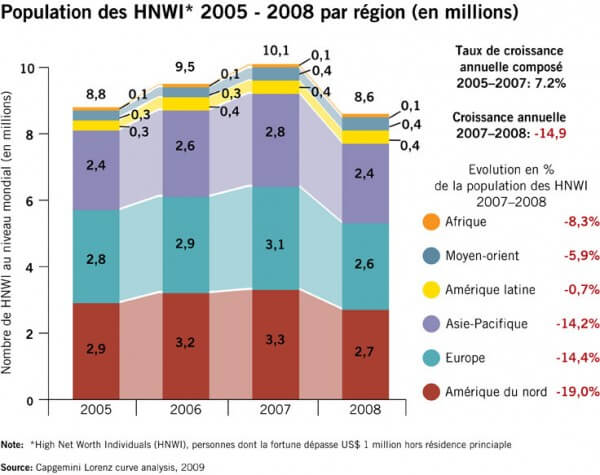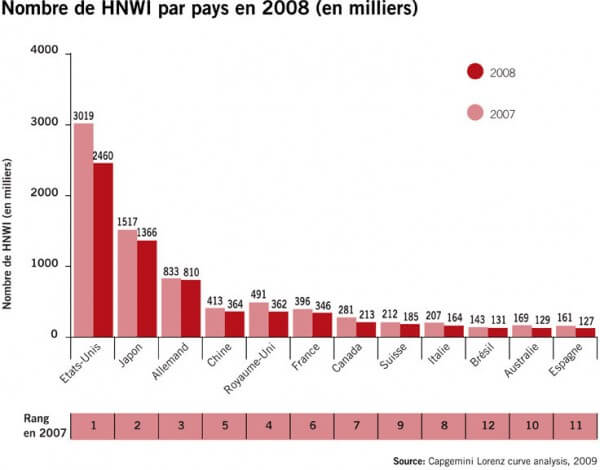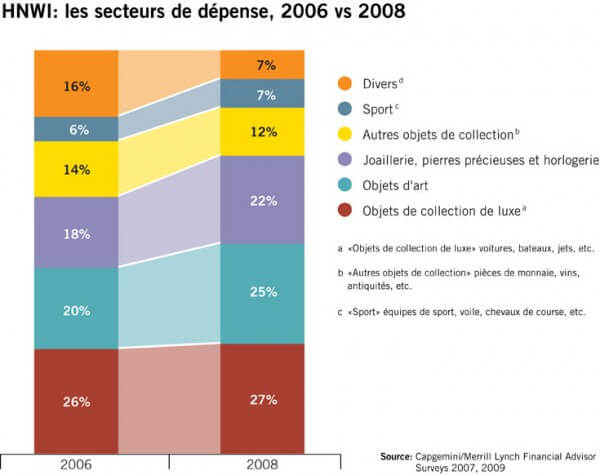Financial crisis is taking its toll on Swiss Made watches. Over the first five months of the year, Swiss watch exports fell 25% to CHF 5.03 billion year-on-year. In May alone, exports to the United States, which has long been a favoured destination for Swiss watches, lost a whacking 42.7%. “These figures really are bad news as luxury was generally seen as impervious to recession,” comments Toon Van Beeck, a senior analyst with IBISWorld. “September last year marked a turning point for the industry. This is when the economy really slowed down and unemployment shot up. Affluent customers, who are also affected by the crisis, reduced their spending.”
Published at end April, Bain & Company’s Luxury Goods Worldwide Market Study confirms this view. Claudia D’Arpizio, lead author of the study, predicts that the luxury sector as a whole will decline 15% in the Americas in 2009, and 10% in Europe and Japan. These markets contribute 80% of worldwide luxury sales.

An inevitable reduction in stock
In the watch sector, recession is biting hardest at the high end of the segment. Fred Levin, President at LGI Network which specialises in luxury goods, estimates that sales in the $10,000 to $25,000 price range contracted by more than 40% between January and April 2009. “The industry has grown strongly over the past five years. However, Swiss watches’ share of the US market fell from 29% to 25% in a year. There were no similar declines during previous crises,” Toon Van Beeck observes.
The current downturn could become even more marked, as luxury consumers are increasingly thin on the ground and American retailers, seeing sales shrink, are placing fewer orders with Swiss watch manufacturers. “It’s a question of cash,” explains Chris Ramey, President of Affluent Insights. “Currently, cash is a priority for retailers who have no choice than to reduce their inventory. Some have even had to pull out of the market altogether.” According to LGI Network, 10% of luxury watch and jewellery retailers in the United States (320 points of sale) either stopped carrying timepieces or closed down between end 2007 and end 2008. “Retailers that specialise in high-end pieces are most exposed because they tend to be the least diversified. And if their stock levels are high, they are particularly at risk,” adds Toon Van Beeck.

Dangerous discounts
American retailers are adopting various strategies aimed at countering recession. Some, such as the Tourneau group which says it has no plans to close any points of sale, are counting on improved customer service and new marketing approaches. As Executive Vice President Andrew Block explains, “we are continuing to invest and focusing on those areas which could benefit from more attention.”
Others are looking to reduced costs, mainly through redundancies, repositioning in market niches and, most of all, heavy discounting. However, slashing prices, a strategy intended first and foremost to move stock and rival second-hand dealers and online auction sites, is not without risk for brand image. “In the current economic climate, prices have fallen across every category of product in the United States and this clearly hasn’t affected how customers perceive high-end brands. However, if discounting becomes a long-term strategy, this could change,” warns Fred Levin.
Chris Ramey shares his view. He believes brands’ prestige would only come under threat if their products became widely available. “The audience reflects the brand and vice versa. If the grey market means a wider, non-target audience can wear luxury watches, the image of these brands will inevitably suffer.”

A new consumer profile
The crisis could have consequences in addition to closing down points of sale and falling revenues. Chris Ramey believes the very notion of “luxury” will evolve. “A new culture is emerging in the United States which considers it a sign of bad taste to wear an obviously expensive item. This has two consequences. Firstly, customers who moved away from expensive watches won’t necessarily be tempted back, even if they can afford to again. Secondly, the watches that will stay the course in this redefined market will be more low-key.”
Claudia D’Arpizio draws an identical conclusion at Bain & Company. She believes consumers no longer associate high prices with luxury. A new category of buyer is looking for products that guarantee quality alongside a more understated design. With the economy in crisis and as mentalities change, Chris Ramey sees little chance of an upturn in the American market before several years to come. “Countries such as Brazil, China and India are the growth markets for high-end watches.” Toon Van Beeck takes a more optimistic view: “Of course India, Brazil and the Middle East will contribute to a rise in sales. But the United States remains the world’s biggest economy, with an exceptional number of high net worth individuals. I expect to see a return to growth as from 2011.”
A SHARP DECLINE IN THE NUMBER OF HNWIs
According to the Capgemini Merrill Lynch World Wealth Report 2009, the world’s population of High Net Worth Individuals (HNWIs – persons having investable assets of US$ 1 million or more, excluding primary residence) fell 14.9% in 2008 to 8.6 million. Their wealth dropped 19.5% to US$ 32.8 trillion. These were unprecedented declines which wiped out two years of growth in 2006 and 2007, when the number of HNWIs grew 7.2% annually and their fortune gained 10.4% annually. Ultra-HNWIs (investable assets of US$ 30 million or more, excluding primary residence) have been hardest-hit by the global downturn as their numbers fell 24.6% last year and their wealth declined by 23.9%.
This brutal change in fortunes has impacted HNWI wealth distribution per region. While the majority (54%) of HNWIs still reside in the United States, Germany and Japan, China’s HNWI population has overtaken that of the United Kingdom, having exceeded France in 2007. Hong Kong’s HNWI population took the biggest tumble, dropping 61.3%.
Capgemini Merrill Lynch forecast that HNWI wealth will resume growth as the global economy rights itself. They predict that global HNWI wealth will reach US$ 48.5 trillion in 2013, advancing at an annualised rate of 8.1%. By 2013, Asia-Pacific is expected to surpass North America as the region with the most high net worth individuals in the world.










